‘Oh the Mediterranean addiction, how we fall for it!’ So sighed Sybille Bedford, who spent the 1920s and 1930s in Sanary-sur-Mer. Aldous Huxley settled in the same fishing village in 1930, writing to his sister-in-law: ‘Here all is exquisitely lovely. Sun, roses, fruit, warmth. We bathe and bask.’ James Lees-Milne perched further along the coast at Roquebrune from 1950–61. In a reverie, he later recalled the smells of brioche, coffee, pine needles, ‘the senses heightened, expectant of lovely future days without end’.This illusion of limitless freedom had given to Bedford, too,
a large sense of living rationally, sensuously, well, of pleasure on many levels: now and before us and for years to come, as no other place in Europe, no other place in the world…
Half a century earlier, Robert Louis Stevenson had inhaled the herbal wind and turned his tubercular cheeks to what Bedford called ‘the unfudging sun’ — and felt a similar pull, remarking shortly before his death: ‘I was only happy once: that was at Hyères.’
Like Patagonia, there is no official boundary to the French Riviera. Synonymous with the Côte D’Azur, it stretches from Menton and Monte Carlo in the east to Cassis in the west. Made popular by foreigners — according to Bedford, no Frenchman born north of Valence would have dreamt of exposing his womenfolk and children to the heat — its reputation as a sunny place for shady people continues to be enhanced by the likes of (Sir) Philip Green. Today’s Riviera is, in Mary Lovell’s phrase, ‘a place where money is everything’, and five-bedroom houses cost up to £18 million. Yet Lovell’s survey is less a history of this coastline than the potted biography of one particular villa, the Château de l’Horizon, its expatriate American owner, Maxine Elliott, and her imported guests.
In earlier life, the matronly Maxine was a ravishing actress from Maine called Jessica Dermot, the slender mistress of J.P. Morgan, Lord Rosebery and quite possibly Edward VII, although ‘whether her intimacy with the king involved sleeping with him will probably never be known’. For her last love affair, Maxine chose an inhospitable strip of rocky beach on the other side of the railway line near Juan-les-Pins. With the assistance of Barry Dierks, a Pittsburgh-trained architect recommended by Somerset Maugham (who lived nearby), Maxine erected a white art deco villa featuring a large terrace and a chute that was designed to accommodate her 230lb body and eject it, with ecstatic shrieks, from the swimming pool into the sea.
Completed in 1932, the Château de l’Horizon was intended on one level to
recreate Hartsbourne Manor, Maxine’s prewar country house in Hertfordshire. ‘Anybody who was anybody went gladly to Hartsbourne,’ explains Lovell. The same stereotypes hastened to Maxine’s Riviera folly, where she received them in a cloud of incense, dressed in white to match her now-white hair, ‘and waited for them at the foot of the sweeping pale marble staircase’, as though again on stage at the New York theatre named after her.
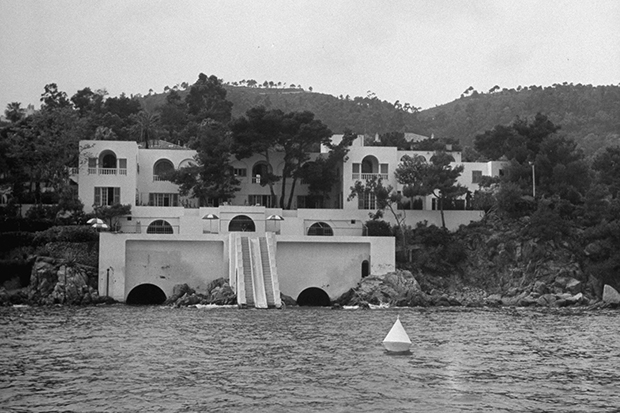 Château de l’Horizon, Maxine Elliott’s art deco villa, with its large terrace and chute from the swimming pool into the sea.
Château de l’Horizon, Maxine Elliott’s art deco villa, with its large terrace and chute from the swimming pool into the sea.
Maxine’s most celebrated guest was Winston Churchill, who first arrived in August 1933 to edit his Marlborough biography and to paint. Lovell primly dismisses the idea that Churchill had an affair with Maxine, as the Marquess of Bath maintained; or with another of her regular guests, Daisy ‘Wanton’ Fellowes, who once invited Churchill to her room at the Paris Ritz where she lay ‘stark naked on a tiger skin’.
Lovell, though, has exciting reservations about that ‘unrivalled nitwit’, Carla
Delevingne’s great-aunt Doris Castlerosse, whom Churchill painted three times while staying with Maxine — ‘Doris is a different case.’ With her usual recipe of speculation based on no hard evidence, Lovell concludes that while ‘we will never know the truth… it is entirely possible that she jumped into bed with him’ and that afterwards ‘Winston said to her, “Doris you could make a saint come!”’ Perhaps not surprisingly, Clementine avoided going to the Riviera with her husband, feeling that it epitomised ‘the shallowest side of his nature’. Indeed, as conveyed to us by Lovell, the emotional baggage of most of Maxine’s friends could have been designed by Louis Vuitton, among the more intelligent utterances of Aly Khan, the villa’s next owner, being ‘Wine for everyone!’ and ‘Where are the girls?’
Listening to Churchill’s conversation at dinner with Maxine and Lloyd George, another guest, Vincent Sheean, was struck by their ‘incurable frivolity, owing to their astrononomical remoteness from the conditions of life of which they spoke’. A comparable detachment infects The Riviera Set. Lovell’s account is an outsider’s job — a peep over the wall at people who are, invariably, fabulously rich — and reads like a silent movie made in colour. It benefits from no real access; Lovell spent a day at the Cannes Municipal Archives, then chartered a small yacht to peer at the Château de l’Horizon, now owned by the Saudi royal family and converted to ‘a vast development painted pink and of no particular style’.
The same might be said of her confection, which has no spare room for local voices; for painters such as Matisse, who lived in Nice; for wartime heroes such as Varian Fry, who holed out in Marseilles; or for writers such as D.H. Lawrence, who died in Vence; or for Thomas Mann and Franz Werfel, who made Sanary-sur-Mer ‘the one-time capital of German literature’. It prefers to salivate over the poolside tittle-tattle of a few shallow socialites, whose lives were seedy and sad and over-acted out on a terrace where ‘magnums of pink champagne flowed like waterfalls’. As the Aga Khan muttered at the wedding there of his son Aly to Rita Hayworth: ‘Too much caviar, Rita, too much caviar.’
The post Divinely decadent appeared first on The Spectator.
Got something to add? Join the discussion and comment below.
Get 10 issues for just $10
Subscribe to The Spectator Australia today for the next 10 magazine issues, plus full online access, for just $10.
You might disagree with half of it, but you’ll enjoy reading all of it. Try your first month for free, then just $2 a week for the remainder of your first year.

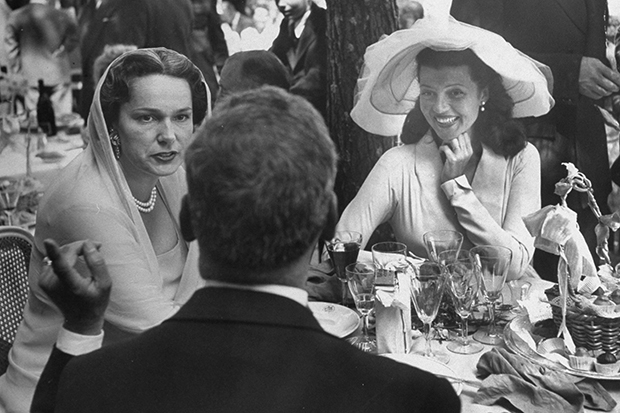
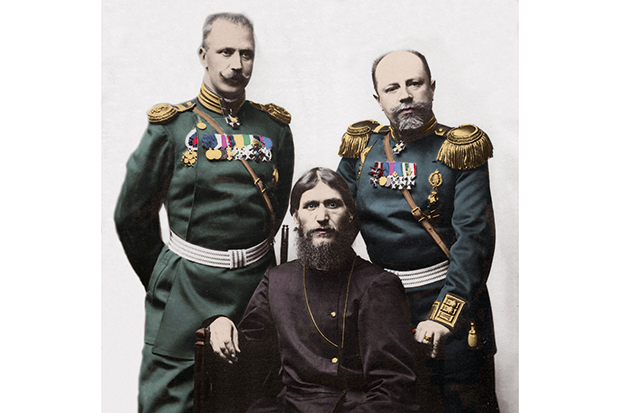

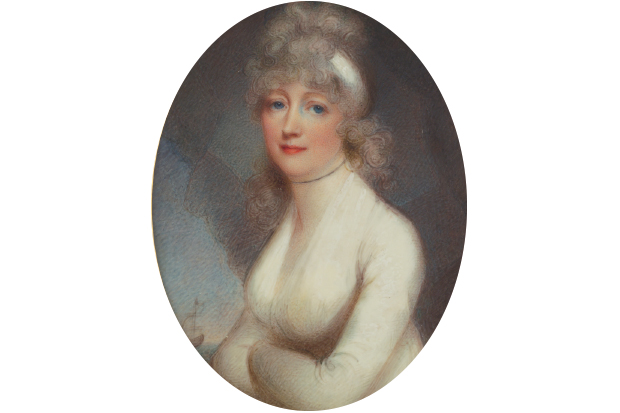

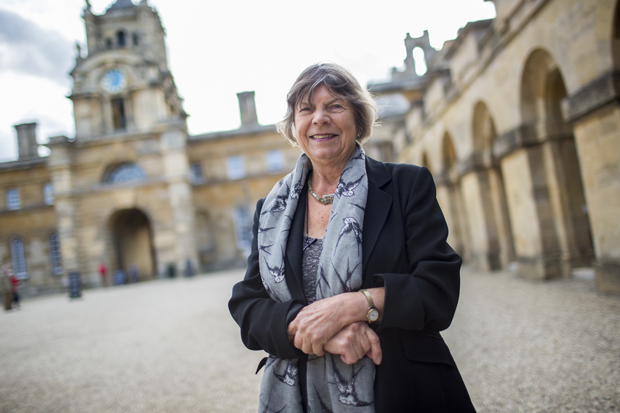
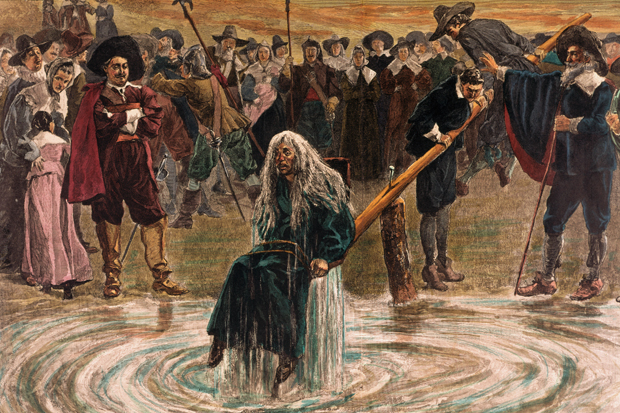






Comments
Don't miss out
Join the conversation with other Spectator Australia readers. Subscribe to leave a comment.
SUBSCRIBEAlready a subscriber? Log in